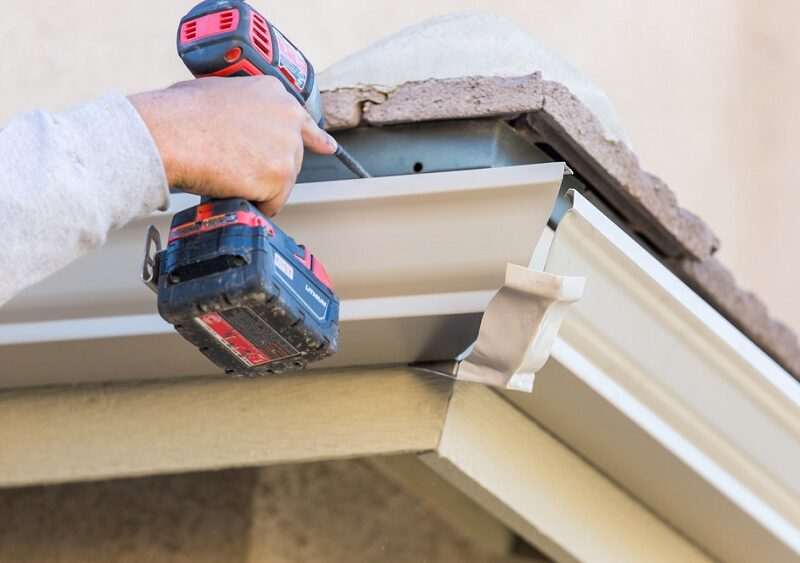Some jobs around the home can be easily completed by the homeowner; others though should be left to the professionals. Nevertheless, there are some people who know their limits when it comes to DIY jobs and then some who believe that they can do anything they put their mind to. Moreover, while having a go is to be applauded, the experts at Global Gutter Systems tell us that there are many common mistakes made by eager DIYers when it comes to a rain gutter install. If you are planning to fit gutters to your home, the following are some of the mistakes you need to avoid if you want to get the job right.
Choosing a Gutter Material That’s Hard to Work With
It is understandable that you might want to choose a beautiful material for your gutters, such as copper or zinc, but unless you have experience in fitting gutters, you might struggle with these expensive options. Copper, zinc, and even stainless steel gutters are not recommended for self-installation because installation is complex, and the materials are much more expensive than options such as aluminum or vinyl.
Failing to Pitch the Gutters Correctly
The biggest mistake made when installing gutters is failing to pitch them correctly. Gutters are not designed to be level with the roofline and should be placed at a slight pitch to allow the rainwater to flow seamlessly into the downspout and away from the home. However, the pitch should not be noticeable from ground level. If you pitch them too high, the water will flow too fast, and they will not look very nice.
Placing the Gutters Too High
Gutters should be attached to the fascia boards of the home, but they are not meant to be attached directly to the top of the roofline. Instead, they need to be positioned a few inches lower. If they are too high, the water is likely to drip down the back of the guttering, which could cause water damage to the sidings of the house.
Going for the Cheapest Option
While it is not advisable to choose the most expensive type of gutter for a self-installation, choosing the cheapest materials is also inadvisable. If you are saving money by installing gutters yourself, it would make sense to choose materials based on their quality rather than the price. Vinyl and aluminum gutters are recommended for self-installation as they are lightweight and easy to work with (but look for a system from a reputable retailer). The cheaper the materials, the lower the quality is likely to be. And a poor-quality gutter system will no doubt need to be replaced within a few years, costing your more money in the long run.
Failing to Secure Seams Properly
When self-installing rain gutters, you will need to make sure that the seams are secured correctly, or you could end up with a gutter system that leaks and is unstable. Furthermore, avoid too many seals as this will mean a system that is fragile and susceptible to collapse with heavy weight, such as during heavy rains and snow.
Conclusion
There is no reason why experienced DIYers cannot install their own rain gutters, but if you are considering doing this yourself, it is important to be aware of the most common mistakes that people makeso that you can avoid them.
It is imperative that you choose a material that is easy to work with but one that is not so cheap as to be of inferior quality. Additionally, make sure you pitch the gutters correctly and secure the seams to prevent leaks and damage to the gutter system.











